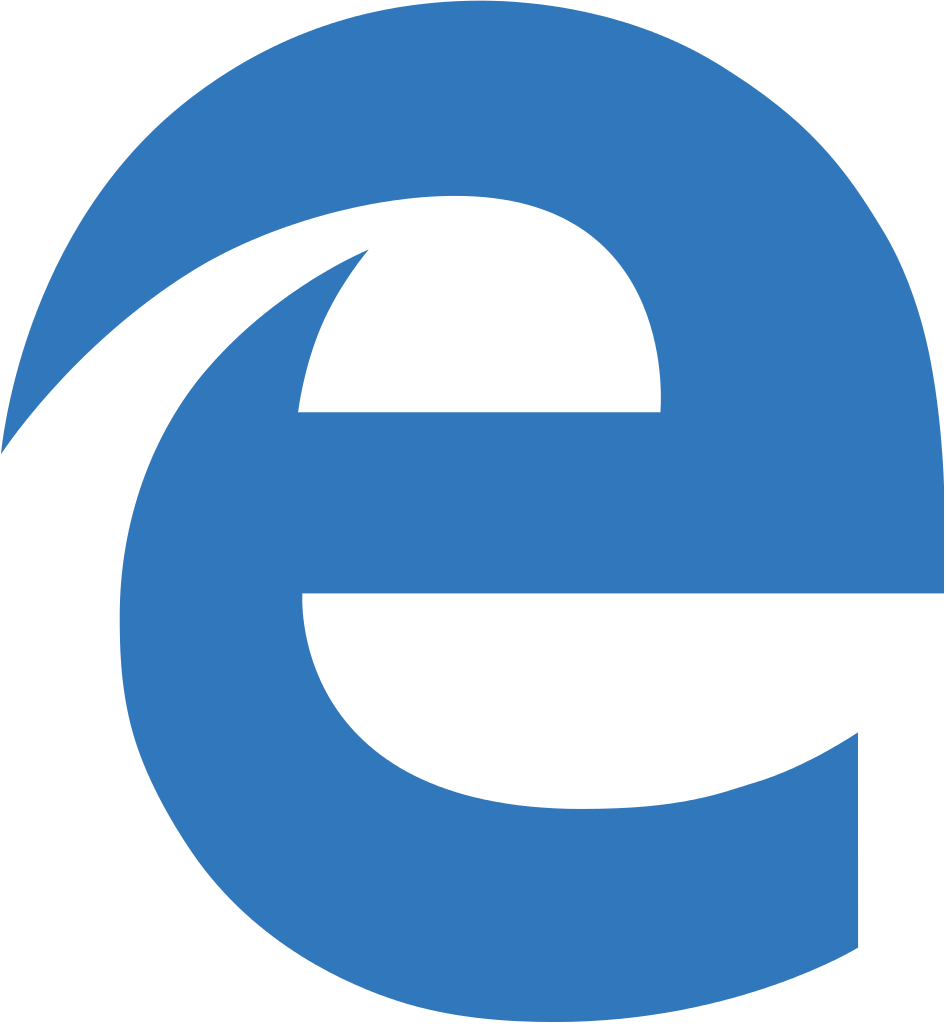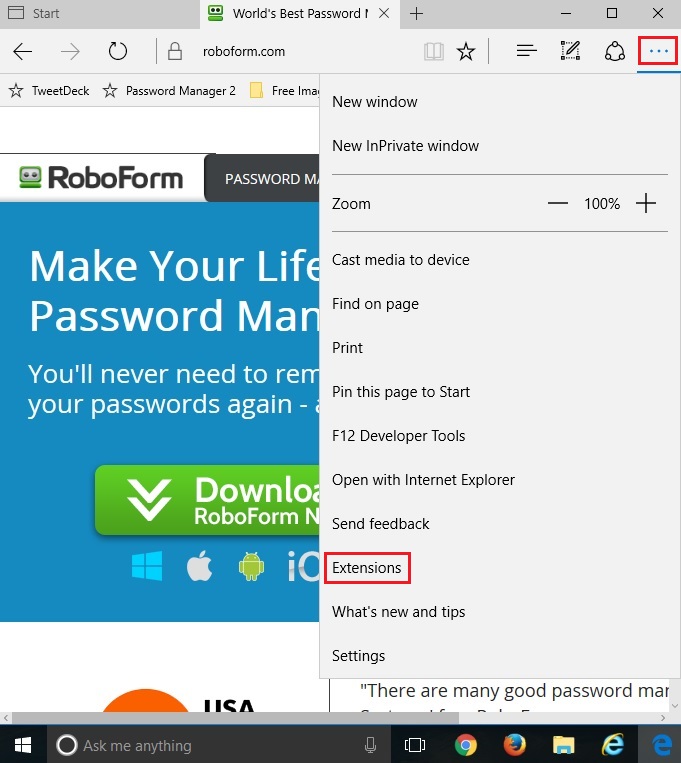

#Roboform and microsoft edge manual#
If automation end users do not enable the extension, you must perform a manual process to recover and re-install the extension. Automation end users must enable the extension so Robot Runtime can automate the browser. Automation developers, of course, would enable the extension. Enabling the extensionĪfter installing the Pega Edge extension, the first time any user starts Robot Runtime, that user must decide whether to enable or uninstall the Edge extension. Edge -i Note: For help information about additional parameters that you can include, append the -h parameter to the command.
#Roboform and microsoft edge install#
The following is an example of the command you enter to install the extension and update the messaging host for Edge. This utility is located in the Robot Studio or Robot Runtime installation folder. If you install Robot Studio or Robot Runtime without the Pega Edge extension and later want to install the extension, use the web installer utility. For more information, see the installation instructions.

To update users from the command line, use the command line installation with the INST_Edge=1 parameter to install the extension. Use the Setup wizard for Robot Studio and Robot Runtime to install the Pega Edge extension. To see when versions of the extension were released, see the Pega Robotic Automation build notes. The Pega Edge extension is backwards compatible the newer versions of the extension work with older versions of Pega Robot Studio 19.1. For best results and additional Edge support, install build 19.1.105 or later. Pega Edge extension was added to Robot Studio in build 19.1.40. Interrogate and automate applications that run on the Microsoft Edge browser by using the Pega Edge extension with the Universal Web Adapter in Pega Robotic Automation. The manifest file must be stored in the following location: ~/.Robotic Process Automation Design Patterns User-specific native messaging hosts, which are available to the current user only, are located in the NativeMessagingHosts subdirectory in the user profile directory. The manifest file must be stored in the following location: /etc/opt/edge/native-messaging-hosts System-wide native messaging hosts, which are available to all users, are stored in a fixed location. The following is an example manifest.json file: isn't required. Step 1 - Add permissions to the extension manifestĪdd the nativeMessaging permission to the manifest.json file of the extension. To create your extension to send and receive messages with native app hosts, do the following steps. Or, install your extension using the Microsoft Edge Add-ons website, and your extension prompts users to install the host. When a user installs the package, both the extension and the host are installed. Package your extension and the host together. To acquire the extension and native app host, there are two different distribution models: However, native apps aren't installed or managed by Microsoft Edge. The native app host sends and receives messages with extensions using standard input and standard output.Įxtensions that use native messaging are installed in Microsoft Edge similar to any other extension. To communicate with a native Win32 app that's installed on a user's device, an extension uses the message-passing APIs.


 0 kommentar(er)
0 kommentar(er)
